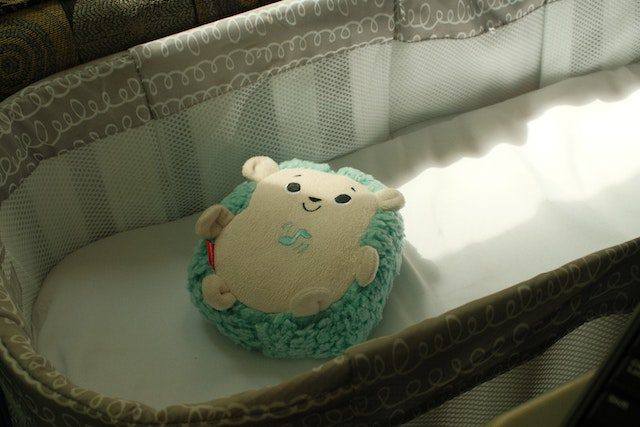Bringing home a newborn baby is filled with joy and anxiety for new parents. Ensuring your baby has a soothing, protected place to sleep tops the list of concerns. While many parents choose to have their newborn sleep in a separate nursery immediately, others see benefits in keeping the baby close by using a bassinet designed for beside-the-bed use. This practice, known as co-sleeping, allows for convenience, bonding, and ease of nighttime care when done safely using a high-quality bassinet.
The bedside baby bassinets make co-sleeping with your newborn secure and comfortable for the whole family. Their innovative designs allow you to create a sleep space that provides closeness when desired while retaining safety and independence when needed.
Table of Contents
Reasons to Consider Co-Sleeping
Co-sleeping offers several potential advantages that make it an attractive option for many parents during their baby’s first few months:
- Greater convenience for late-night feeding and diaper changes
- Ability to quickly soothe night wakings before baby fully cries
- Strengthened parent-child bonding through increased responsiveness
- Easier breastfeeding access during the night
- Familiar presence and sounds can help calm the baby
- Reassurance of having a baby nearby rather than isolated
- Baby’s transition to independent sleep may be more gradual
While the American Academy of Pediatrics recommends room-sharing without bed-sharing for at least the first six months, they note that intermittent close sleeping arrangements are often culturally normative. Co-sleeping allows this closeness while still providing baby their own separate space.
Safety Considerations for Co-Sleeping
If you do choose to co-sleep, safety must come first. Bed-sharing with newborns does pose risks, including:
- Suffocation or entrapment if baby gets trapped between mattress and headboard/wall
- Overheating from shared bedding
- Falling from the adult bed to the floor
- Accidental rollover or obstruction of breathing by parent
Baby bassinets designed for bedside use avoid these dangers while keeping the baby nearby. Look for design features that enhance safety:
- Sturdy construction with a wide, stable base
- Adjustable height to align flush with your mattress
- Mesh sides for optimal ventilation
- Fitted sheet with elastic edges that won’t loosen
- Portability so you can move it from room to room
Additionally, always adhere to these co-sleeping safety guidelines:
- Place bassinet at parent’s chest level to prevent rollover obstruction
- Ensure baby sleeps on back without soft bedding or toys
- Avoid smoking and drinking alcohol before bedtime
- Don’t sleep with baby on a couch, armchair, or other soft surface
- Don’t let older siblings sleep next to the bassinet
Taking these precautions can minimize the risks associated with close sleeping arrangements.
Choosing the Right Bedside Bassinet
If you plan to co-sleep using a bassinet, look for one designed specifically for beside-the-bed use with features to meet your needs:
- Adjustable height mechanism to align with your mattress
- A side panel that drops down for easy nighttime access
- Storage pockets, shelves, and compartments
- Wheels for conveniently moving it from room to room
- Breathable mesh sides for air circulation
- Soothing sounds, music, and vibrations to calm baby
- Canopy attachment to block light for napping
- Rocking or gliding function to help baby sleep
Top brands like Babybay make bassinets with high-quality materials and safety-focused designs. Their bassinets allow you to create a dedicated sleep space beside your bed. Prioritize JPMA-certified products that adhere to the latest safety standards.
Transitioning to Independent Sleep
While co-sleeping offers conveniences early on, you will eventually want to transition your baby into its own sleeping space as it grows. Make this shift gradually over weeks or months based on your baby’s cues:
- Start by moving the bassinet slightly further from the bed each week
- Slowly adjust the incline to get the baby used to a flatter, crib-like position
- Introduce soothing techniques like swaddling and white noise to replace closeness
- Follow wake windows and watch for sleep cues to optimize timing
- Move daytime naps to a separate space before tackling nighttime
- Persist despite setbacks using consistent routines and affirmations
With an incremental approach, both parent and baby can adjust to independent sleep while feeling comforted and secure.
Setting Up a Soothing, Safe Sleep Environment
In addition to choosing the right bassinet, optimize your nursery setup for both safety and comfort:
- Use fitted crib sheets and avoid loose bedding, blankets, and pillows
- Keep the temperature comfortably cool at around 65-70 degrees
- Install blackout curtains or shades to darken the room
- Use a sound machine for ambient noise
- Have diaper-changing supplies, burp cloths, and extra sheets within reach
- Make sure smoke and carbon monoxide detectors are installed
- Consider using a night light or baby monitor if desired
By preparing your nursery with the baby’s needs in mind, you will help them sleep as soundly as possible while keeping the space secure.
Get Support for Co-Sleeping Challenges
While co-sleeping offers many positives, it also comes with its challenges. In the first weeks, you may deal with frequent night wakings, early morning disruptions, and daily exhaustion. Seek support from your pediatrician, certified sleep consultants, and other experienced parents for tips to overcome hurdles.
Support groups like La Leche League can also troubleshoot challenges specific to breastfeeding and co-sleeping. You can forge new traditions with your little one with the right bassinet, setup, and support system.
In summary, co-sleeping using a high-quality bedside bassinet allows you to create a sleep experience that balances bonding, responsiveness, safety, and gradual independence. Look for bassinets designed with innovative features to enable a soothing and protected sleep environment right next to you during the newborn phase. With trusted products, you can enjoy the best of both worlds – closeness for convenience and bonding and separate, secured sleep space to transition your baby toward eventual independence. The right bedside bassinet provides the close comfort newborns crave while prioritizing safety through clever design elements. As your baby grows, a bassinet designed for bedside use makes tending to nighttime needs simpler while reassuring both parent and child.
Featured Photo by Brandon Ricketts: https://www.pexels.com




